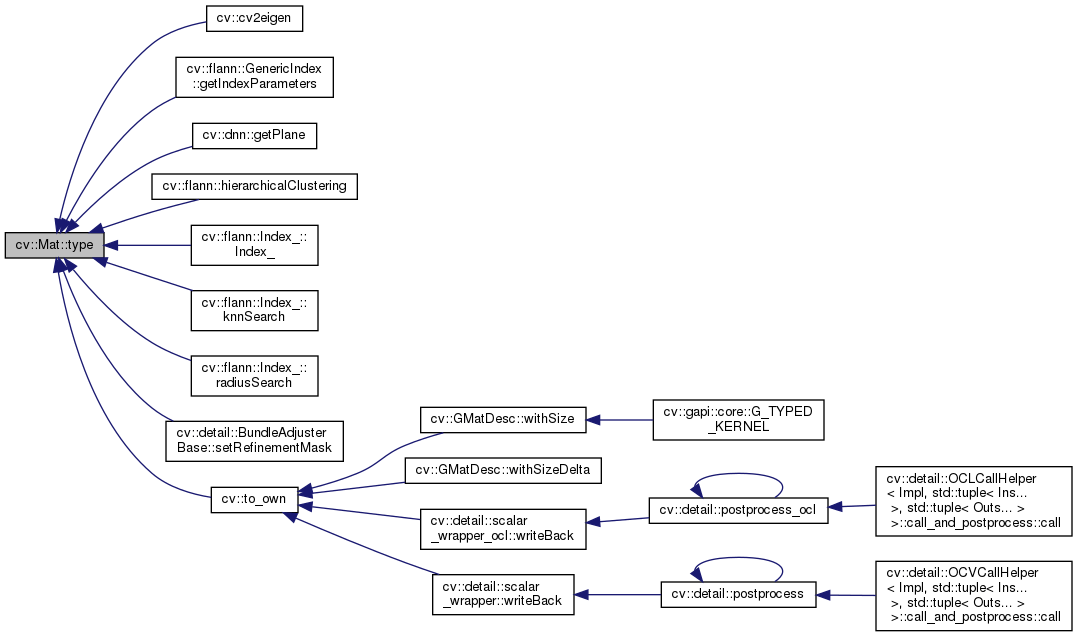Understanding Cv::mat: The Backbone Of Image Processing In OpenCV
In the realm of computer vision, the cv::mat class serves as a fundamental data structure that forms the backbone of the OpenCV library. It provides a robust framework for handling images and matrices, simplifying the process of image manipulation and analysis. As a versatile and dynamic data type, cv::mat can efficiently store various image formats, making it an essential tool for developers and researchers alike. Understanding the nuances of cv::mat is crucial for anyone looking to delve into the exciting world of image processing and computer vision.
Whether you are a seasoned programmer or just starting your journey in computer vision, mastering cv::mat is pivotal. This article will explore the intricacies of cv::mat, its functionality, and its applications in image processing. With a focus on practical examples and clear explanations, readers will gain a deeper insight into how cv::mat operates and its significance in the broader context of OpenCV.
To fully appreciate the power of cv::mat, it is important to understand its structure and how it integrates with other components of the OpenCV library. By the end of this article, readers will not only grasp the basic concepts of cv::mat but also be equipped with the knowledge to implement it effectively in their projects. Let’s embark on this enlightening journey into the world of cv::mat!
What is cv::mat and Why is it Important?
cv::mat, short for "matrix," is a fundamental data structure in OpenCV that represents images as matrices of pixel values. It serves as a container for storing image data, including color channels, depth, and dimensions. By using cv::mat, developers can perform a wide range of operations, from simple image loading and display to complex image processing tasks.
How Does cv::mat Work?
cv::mat operates as a multi-dimensional array that can represent 2D images, 3D volumes, and even higher-dimensional data. Each matrix element corresponds to a pixel in the image, and the data type of the matrix can vary depending on the image format. For example, an 8-bit unsigned integer can represent a grayscale image, while a 32-bit float can be used for more complex data representations.
What Are the Key Features of cv::mat?
- Dynamic Memory Allocation: cv::mat automatically manages memory, allowing developers to focus on image processing without worrying about memory leaks.
- Data Type Flexibility: Supports various data types, including integers, floats, and doubles, making it adaptable for different applications.
- Multi-channel Support: Capable of handling images with multiple channels, such as RGB and RGBA formats.
- Efficient Operations: Optimized for performance, cv::mat enables fast image processing and manipulation.
How to Create and Initialize cv::mat?
Creating and initializing a cv::mat object is straightforward. Developers can use constructors to define the size, type, and initial values of the matrix. Here’s a simple example:
cv::Mat image = cv::Mat::zeros(height, width, CV_8UC3); In this example, a cv::mat object named "image" is created with specified height and width, initialized to zero, and set to hold 3-channel color data (CV_8UC3).
What Are Some Common Operations on cv::mat?
cv::mat provides a myriad of functions for performing various image operations, including:
- Loading Images: Use
cv::imread()to load images into a cv::mat object. - Displaying Images: Use
cv::imshow()to display the contents of a cv::mat object in a window. - Image Arithmetic: Perform pixel-wise operations like addition, subtraction, and multiplication.
- Image Filtering: Apply filters and transformations to enhance image quality.
Can cv::mat Handle Different Image Formats?
Yes, cv::mat can handle various image formats, including JPEG, PNG, BMP, and TIFF. The flexibility of cv::mat allows developers to work with different input data types without changing the core processing logic. This capability makes it easier to integrate with different data sources and formats in real-world applications.
What Are the Best Practices for Using cv::mat?
When working with cv::mat, it’s essential to follow best practices to ensure efficient memory management and optimal performance:
- Use Copy-on-Write: cv::mat employs a copy-on-write mechanism, meaning that copying a cv::mat object does not create a new copy of the underlying data until modifications are made.
- Release Memory Properly: Although cv::mat manages memory automatically, it’s good practice to release resources when they are no longer needed by using the
release()method. - Use the Correct Data Type: Always choose the appropriate data type for your cv::mat to avoid unnecessary memory usage and computation overhead.
How to Debug Issues with cv::mat?
Debugging issues with cv::mat can often be challenging, especially for beginners. Here are some tips to help identify and resolve common problems:
- Check Initialization: Ensure that the cv::mat object is initialized correctly and not left uninitialized or filled with garbage values.
- Verify Image Paths: When loading images, double-check that the file paths are valid and accessible.
- Print Matrix Information: Use
std::coutto print the dimensions, type, and other properties of the cv::mat object for debugging purposes.
What Are the Future Trends for cv::mat in Computer Vision?
As computer vision continues to evolve, so does the importance of cv::mat in image processing. Future trends may include:
- Integration with AI: Combining cv::mat with machine learning frameworks for advanced image analysis.
- Improved Performance: Ongoing optimizations for handling larger datasets and real-time processing.
- Enhanced User Interfaces: Development of user-friendly tools and libraries that leverage cv::mat for easier implementation of complex image processing tasks.
In conclusion, cv::mat is an indispensable tool in the field of computer vision and image processing. Its dynamic and flexible nature allows for a wide range of applications, making it essential for developers and researchers alike. By understanding its functionalities, best practices, and potential trends, individuals can harness the power of cv::mat to create innovative solutions in image processing and analysis.
The Enigmatic World Of The Gypsy Grandfather
Unveiling The Genius Of The Davinci Artist
Unraveling The Genius Of Mathematician Euler


